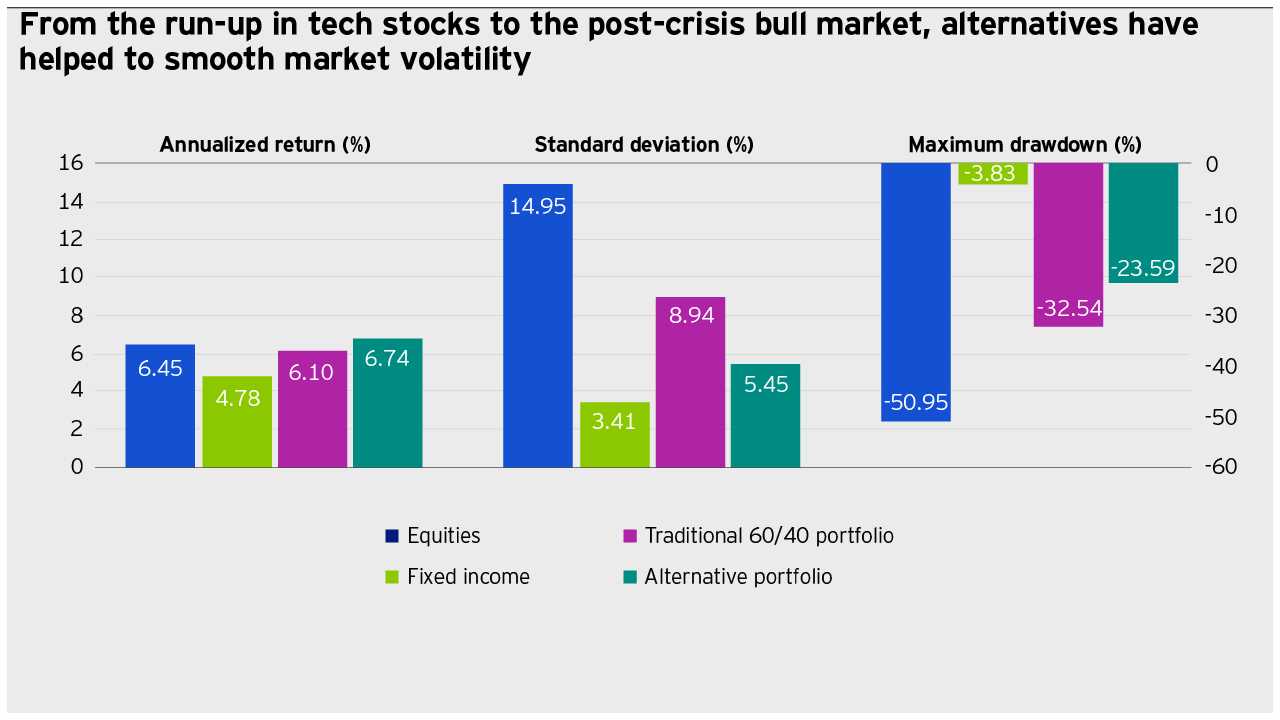You’ve probably heard that diversification is the key to reducing risk while growing your wealth. Holding different types of assets such as stocks, bonds, real estate and even collectibles can ensure that your entire portfolio doesn’t tank when one asset is having a bad day. Investing in alternative products can give you protection from the volatility that happens in the stock market particularly in uncertain times – like the roller-coaster ride happening recently with the COVID-19 pandemic.
However, in order to diversify your portfolio, you need to know what kinds of alternative investments are available. Luckily, there is a whole class of investments that recently came to the market due to changes in the securities laws that can provide a robust annual return for your portfolio. Many are available with minimal investment thresholds and with no purchase or redemption fees. To have a full understanding let’s start from the beginning and break down the options.
Understanding the History Behind Broadening Investment Choices
For the last 80+ years, 98% of Americans were not allowed to buy some of the highest yielding investments to help us build our wealth. These alternative investments – such as investing in private equity or private debt – were only open to wealthy individuals and institutions. It’s no wonder that it’s hard to get financially ahead when our traditional choices are essentially bank CD accounts or the public stock market (where much of a company’s growth has already happened before going public). Because of these regulatory limitations, we were left with very little opportunity to truly build and protect our own nest egg.
In 2012, the JOBS Act changed this and opened the door for the “everyday” investor to access investments in growing private companies and to even participate in private lending to individuals and community businesses. Humans helping humans. These community-focused investments give us the opportunity to support entrepreneurs who create jobs, spur innovation, and who bring life to our cities and towns.
Understanding Investing in Private Markets
Why are these private market investments important? Historically, not only have they provided greater financial returns, but they also provide social returns. Where you put your money matters. As an investor, you can choose investments that support your communities – meaning they support Main Street and local economies instead of those on Wall Street. These opportunities include buying shares in local businesses, investment into real estate notes that help homeowners keep their homes and fixed interest bonds that support growing American companies. The opportunity to be stakeholders in our communities, and in each other, is critical and is what these new investments are designed to offer. This form of “community capital” helps to create a more inclusive and thriving economy for all.
Let’s Break It Down
What is a bond? A bond is a loan made by an investor to a borrower who is typically a business or the government. Your bond investment usually pays fixed interest payments each month until either the bond matures, or you sell the bond. While many bonds are sold by large public companies, some private bonds are community-focused and can help support growing American businesses. These bonds are part of an innovative new asset class, some paying up to 5.5% (5.73% APY)_ annual interest. Instead of the bond sale proceeds going to one large company to fund its own growth, the bond proceeds from these community bonds are put to work across a variety of secured business loans and investments, which can include real estate, CD’s, Treasury bonds and more so that each bond in itself is already a diversified investment. Whether you’re investing $10 or $10,000 you can invest with a 5.5% (5.73% APY)_ return.
What is a stock? A stock, share or equity represents the ownership of a fraction of a company or corporation. This entitles the owner of the stock to a proportion of the corporation's assets and profits equal to how much stock they own. Most of the money you make with stocks will come through either increase in share price or through dividend payments. Both stocks and bonds have varying levels of price, risk and return. In general, bonds are considered attractive as they offer more predictable returns than stocks which can swing in value.
Historically, alternative investments have been less liquid than traditional investments – it’s not as easy to sell a classic car, a piece of real estate, or an interest in a commercial loan, as it is to trade a stock – so this has been another barrier for retail investors. But this is now changing as innovative ways to gain access to these asset classes through new financial instruments - like private bonds and non-trading real estate REITS - have developed. It not only took advances in securities regulations, but it required technological ones as well to bring these new offerings to market. Financial technology platforms that allow for the digitization and distribution of private market securities, especially those which allow for fractional or micro-investing, have opened up a whole new world of options for retail investors.
But we have some catching up to do. Portfolio allocations to alternatives among individual investors currently average less than 10%, compared with about 30% among institutions (and far higher among the largest university endowments). With the rise in these new asset classes, we can now access the types of institutional quality investments that the wealthy have always had and allow us to see some real financial growth.
So next time you’re looking for a place to stash your cash, think local. Consider adding higher-yielding, community-based investments to your portfolio. Everyone is worthy of economic security and if this can be accomplished while offering both a financial and a social return, while protecting your money from stock market downturns, it’s a home run!
This article was originally published on mint.com
Tags:
Modern InvestingMarch 22, 2021







